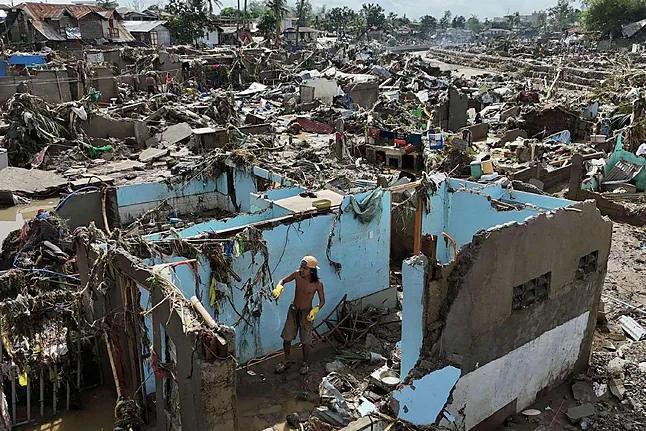The Philippines, an archipelago with over 7,000 islands, of which 2,000 are inhabited, experiences more than two dozen strong typhoons each year, making it one of the most vulnerable places on the planet to natural disasters. News of fatalities in fatal floods that always leave thousands displaced is common. But this week, the country was hit by the deadliest storm so far this year.
On Thursday, Filipino President Ferdinand Marcos Jr. declared a state of calamity after Typhoon Kalmaegi left at least 140 dead and 127 others missing. Authorities have explained that "unprecedented" floods devastated entire towns in the central regions, especially in Cebu Province, where the majority of victims have been reported.
In total, nearly 800,000 people were evacuated during the typhoon's passage. Marcos' declaration is a mechanism used in these cases to allow the government to quickly disburse emergency funds, bypassing many bureaucratic steps, and deliver necessary aid to the most affected areas, as well as control price hikes or hoarding of food.
Kalmaegi left the Philippines on Thursday morning and was heading with winds of 155 km/h towards central Vietnam, a country still recovering from recent floods that caused nearly fifty deaths.
Vietnamese authorities anticipate the typhoon making landfall late and causing waves up to eight meters high and strong cyclonic surges.
AFP reporters dispatched to the areas most affected by the typhoon in the Philippines described stacked cars, collapsed buildings, and residents trapped under debris. On the island of Negros, where more than thirty deaths have been reported, intense rains led to a flow of volcanic mud into populated areas burying several houses.
"The eruptions of Kanlaon volcano since last year deposited volcanic material on its upper sections. When it rained, those deposits cascaded onto the villages," explained police lieutenant Stephen Polinar. Among the deceased in this location are six rescuers who were on a military helicopter that crashed on Wednesday during the operation.
Just over a month ago, 74 people died and over 500 were injured after a magnitude 7.0 earthquake shook Cebu. A few days later, the Philippines issued a tsunami alert after another magnitude 7.4 earthquake hit the coast of the Mindanao region, damaging several buildings.
The Philippines lies within the Ring of Fire, the most seismically active region in the world, geologically unstable, leading to frequent earthquakes and volcanic eruptions. The recent earthquakes followed the passage of two consecutive typhoons that resulted in over a dozen deaths in the country.
During the summer months and September, the monsoon season, widespread flooding occurred. This led to a wave of protests in many cities due to a massive multibillion-dollar corruption case related to mismanagement of public funds in flood control projects.
